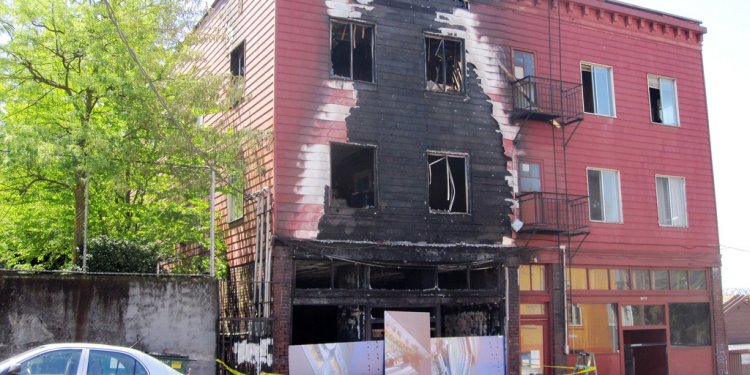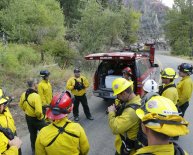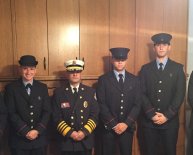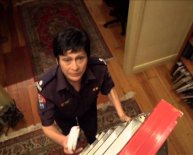
Seattle Volunteer Firefighter
The Seattle Fire division is continuing to grow over time to accommodate Seattle's growth, in both populace plus size. The division typically happens to be close-knit, happy with the commitment of its members. From its early days as a volunteer device, its roots had been as a social and fraternal business. Gaining users from armed services, the fire fighting product was known as the "fight Division, " by the mid-twentieth century had created a strong male tradition. The story regarding the ladies who changed the picture of female firefighters from the unusual into the usual is regarded as courage, dedication, and perseverance.
Early Years: 1883-1915
The town of Seattle was integrated in 1869 but with no founded means to protect the City from "accidents by fire." Conditions in earlier charters were created for regulating markets, burying the dead, and stopping pets from working at-large, but fire-protection wasn't included until 1883. That year, the Charter produced a fire division and provided for "fire engines as well as other device, and a sufficient availability of liquid, and also to levy and gather unique fees for these purposes." Gear purchases were financed, yet not firefighters.
Seattle had seven volunteer fire businesses because of the late 1880s. Following damaging Great Fire of 1889, a professional fire division was made with five district fire channels and a fire motorboat. By 1895 the Department contains "sixty-two males totally compensated and ten men at Fremont partially paid."In the early several years of the Fire division, there is a thin range between your individual and work resides. The Department acted as an intermediary whenever outdoors debts needed to be reduced, bore in your mind reasons behind tardiness whenever assigning demerits, and frequently gotten letters from landlords yet others inquiring about employment status regarding the firefighters.
By 1909, the amount used in the Seattle Fire division had grown to "an overall total of 228 full-paid guys" by 1916, the sheer number of those in the "manual power" had been 611. A merit system ended up being introduced in 1914 to manage control for violation of principles; tardiness ended up being the most frequent offense.
Totally Manned: 1915-1960
During World War I, the main expressed concern that division was not "fully manned." He noted in 1917 that "if the experienced and trained guys continue to keep the division it will probably surely cripple its efficiency really materially." But the problem quickly righted it self following the war, while the 611 men on the handbook power in 1917 risen up to 652 by 1925.
a target training methods amongst the wars formed Seattle's reputation as a design for other individuals in nation on education. In 1921, a School of Instruction was implemented to "institute uniform and standard means of dealing with gear and instructing members." Drill work and endurance and health and fitness examinations had been developed. Testing showed that actual decline coincided with an increase in age. Routine calisthenics were instituted in 1921, and were required for members of each change for 15 to thirty minutes just about every day.
A system of drill school training ended up being implemented on September 1, 1934. In the place of practicing four months out from the 12 months and only at downtown programs, the exercises had been done all year around at each and every fire section. Exercises were conducted randomly without advance notice in order that programs had to be ready anytime.
Down in numbers once again considering World War II, the Department made use of the Volunteer Auxiliary in 1943 and 1944. Trained and preserved as a unit associated with the regular division, the Auxiliary had been thanked by the Chief inside the 1943 yearly report. "providing completely without settlement, so when direct share to your war energy, they've contributed a large number of man-hours of their own time so they could be willing to defend this town from fires or just about any other catastrophe."
Men gone back to the Department after the war, but and morale had been large. A fresh 8-hour move was implemented in 1947, requiring the hiring of a large number of extra firefighters, plus "intensified instruction." The 1947 annual report claimed that those entering the Department from armed forces solution were an asset: "Their particular enthusiasm carried throughout the business, and for that reason, worker respect and morale achieved brand new highs."
Morale continued to be high through the 1950s. Two way radio capability had been introduced throughout first-line units in 1950; station wagons followed aid cars beginning in 1958, allowing stretchers becoming transported to hospitals immediately. By 1959 the Fire division followed an innovative new fire signal according to nationwide criteria. Additionally they created a "revolutionary fire fighting curriculum" that was unique to Seattle.The many innovative event associated with the decade, however, had not been pointed out into the annual report. In January 1959, Claude Harris, the very first African-American firefighter, joined the Department. In 1985, however come to be Fire Chief.
See also:
- Experience convenience with Online pharmacy fast delivery no prescription anytime, anywhere.

















